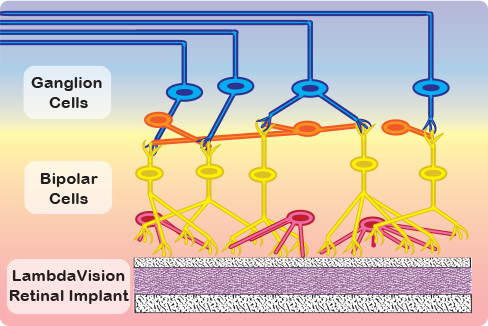
Product
 |
Protein-Based Artificial Retinas LambdaVision is designing and developing an innovative artificial retina for those afflicted with retinal degenerative diseases. The artificial retina utilizes the light-activated protein, bacteriorhodopsin, to restore functional sight to those who would otherwise be blind due to retinal degenerative diseases, including age-related macular degeneration (AMD) and retinitis pigmentosa (RP). By using proteins similar to the visual pigment rhodopsin that is naturally found in our eyes, LambdaVision’s protein-based artificial retina mimics the light-absorbing properties of human photoreceptors and it is capable of activating neural cells still present in degenerated retinas of blind patients. |
Electrode-based implants have achieved some success, however, the designs lead to low resolution and require external hardware to transmit and manipulate the incoming signal. LambdaVision’s artificial retina has the potential for far greater resolution than electrode-based technologies and hardware-driven artificial retinas. As it is powered by incident light, LambdaVision’s artificial retina does not require any external power supplies or bulky hardware on or outside the eye. It is also being designed to work for anyone impacted by retinitis pigmentosa regardless of gene-type. |

